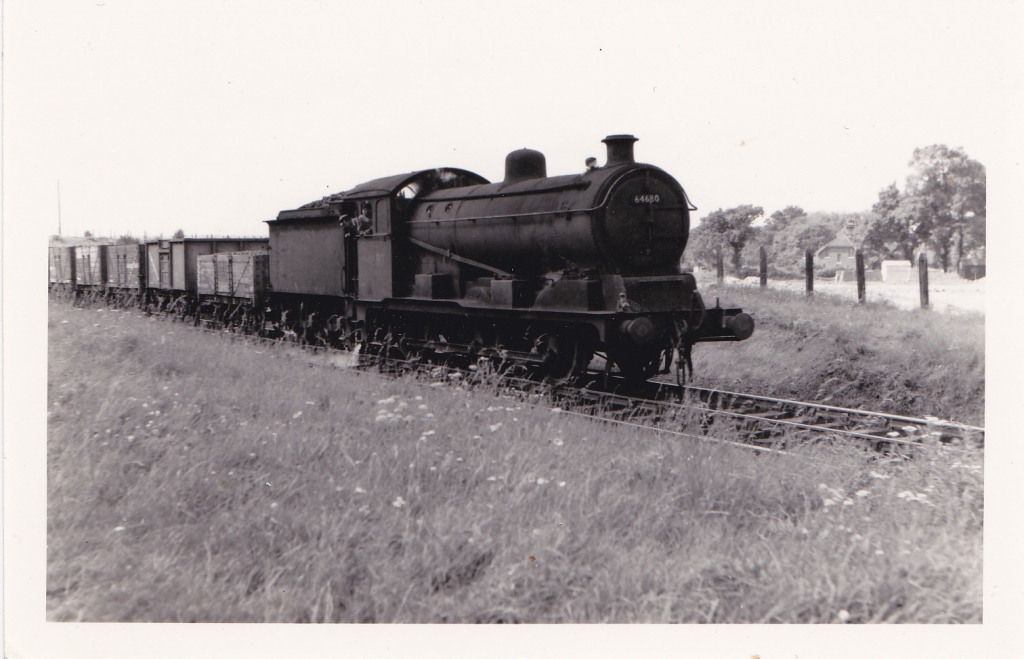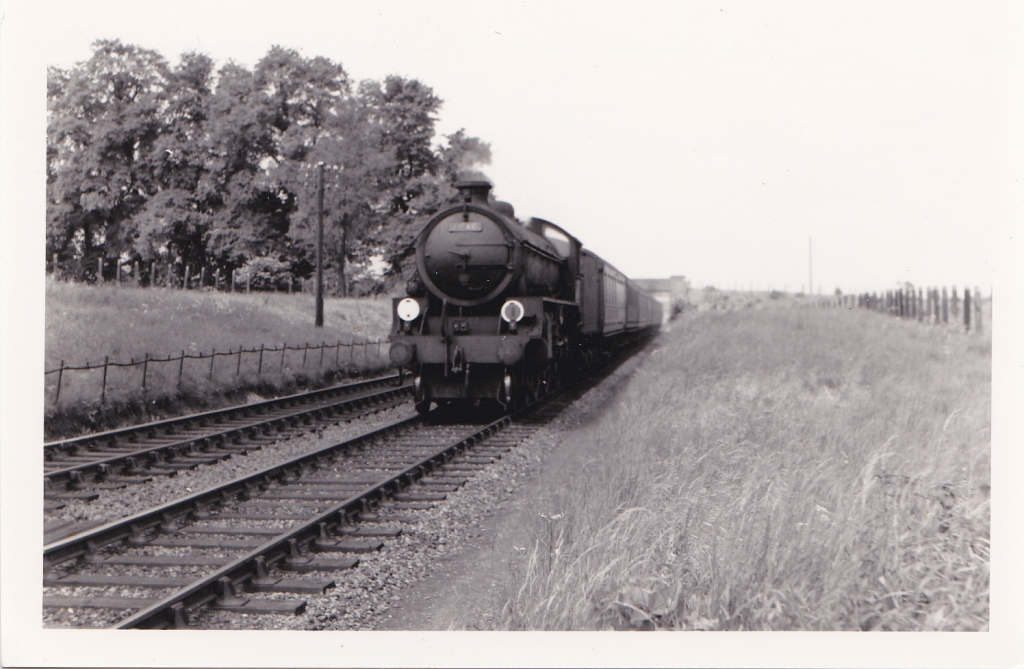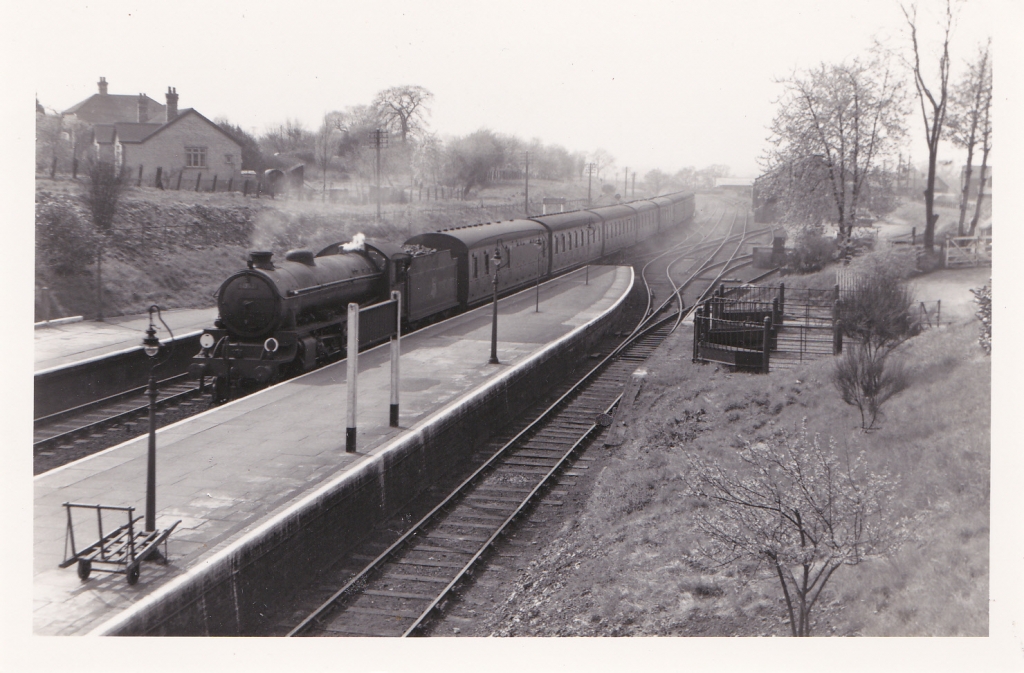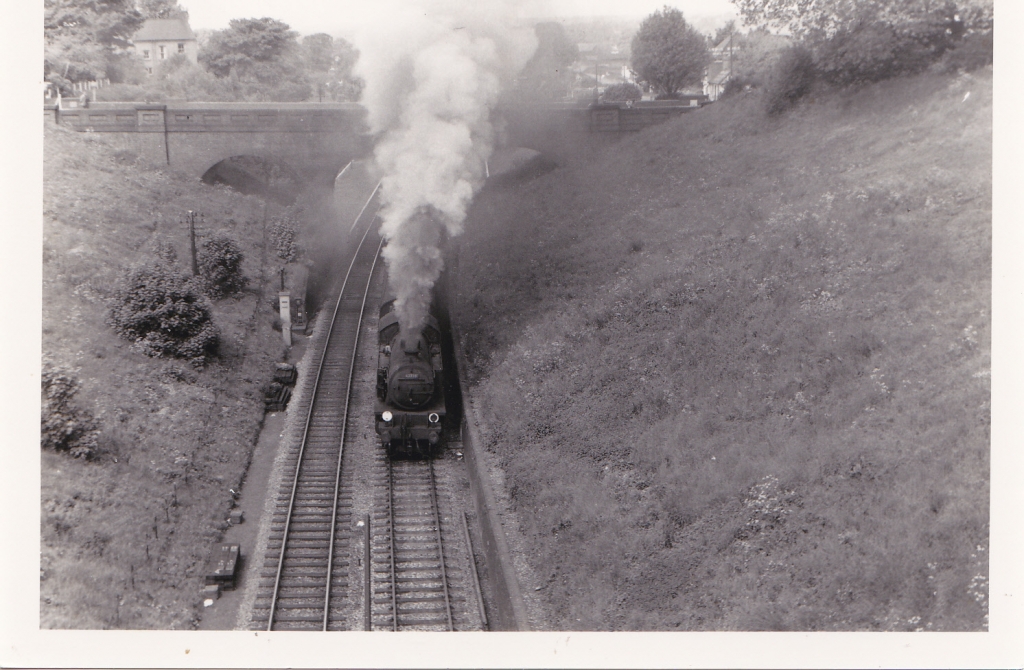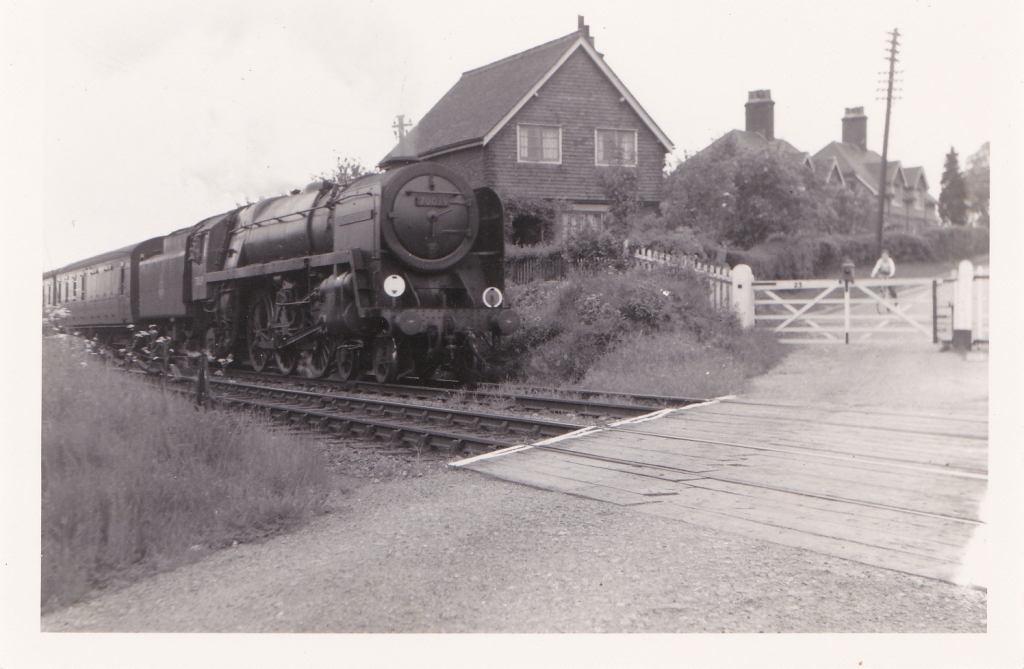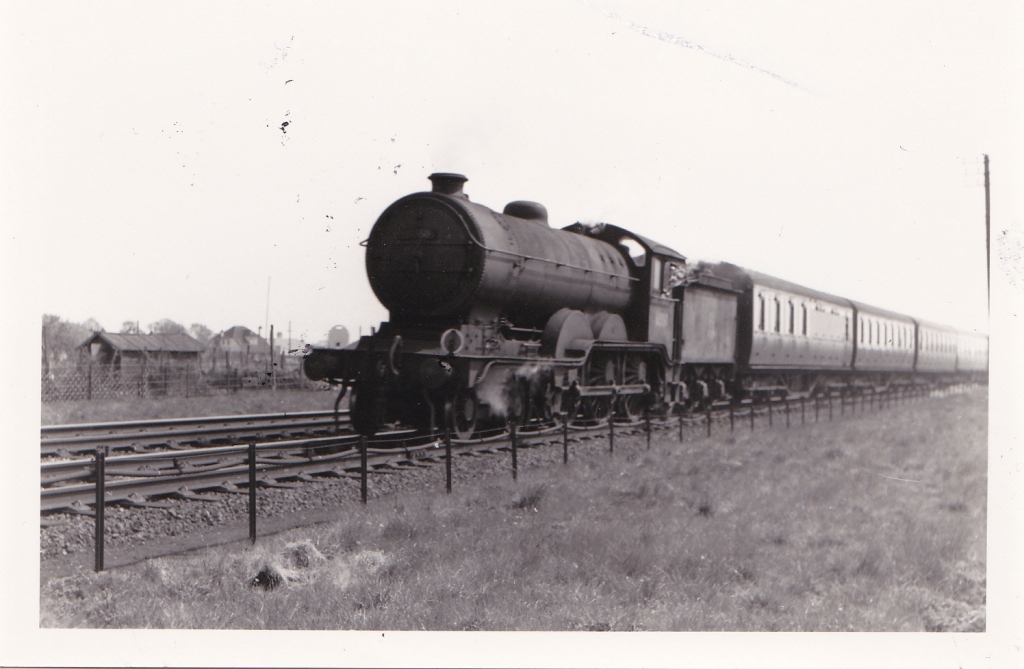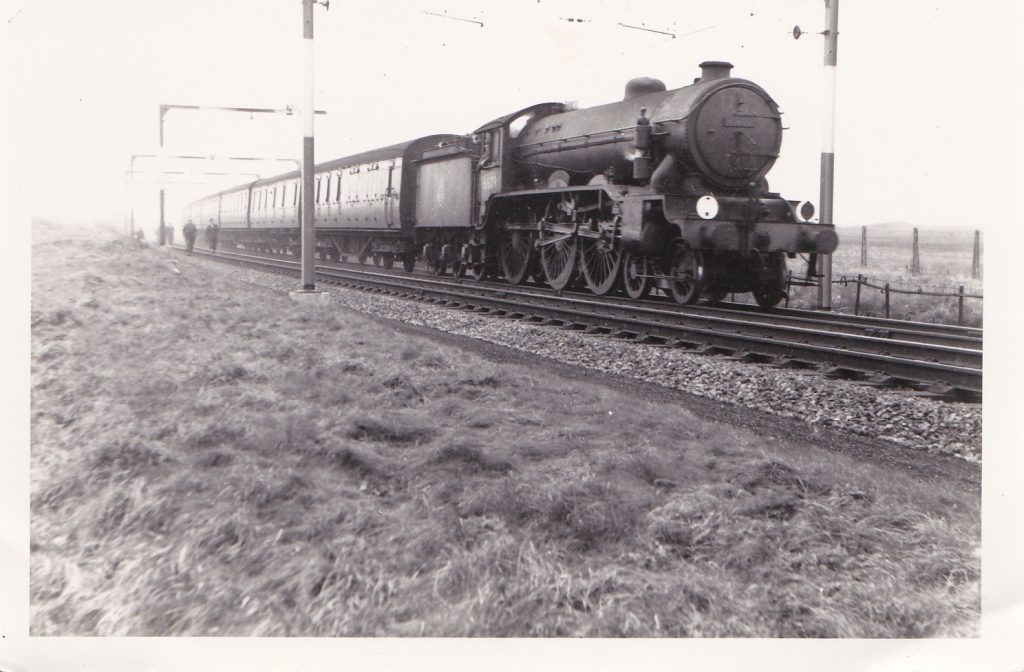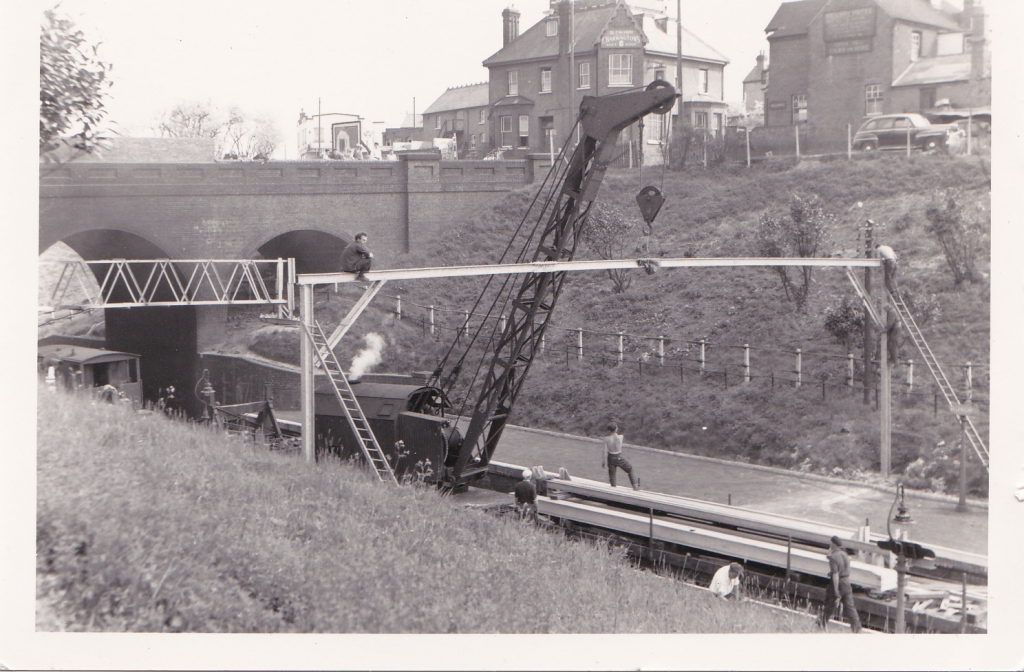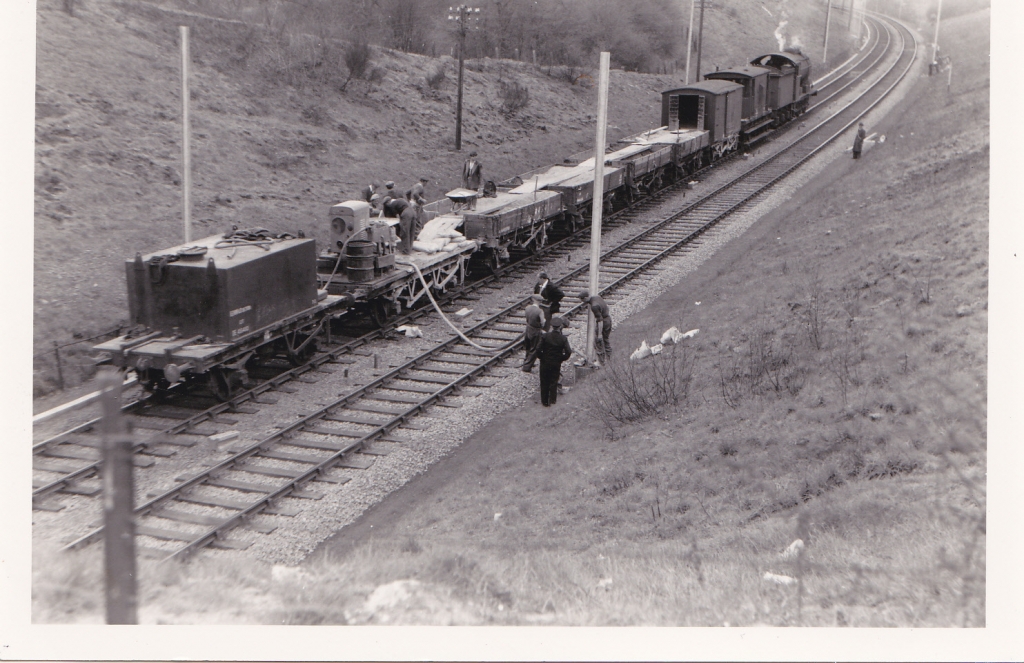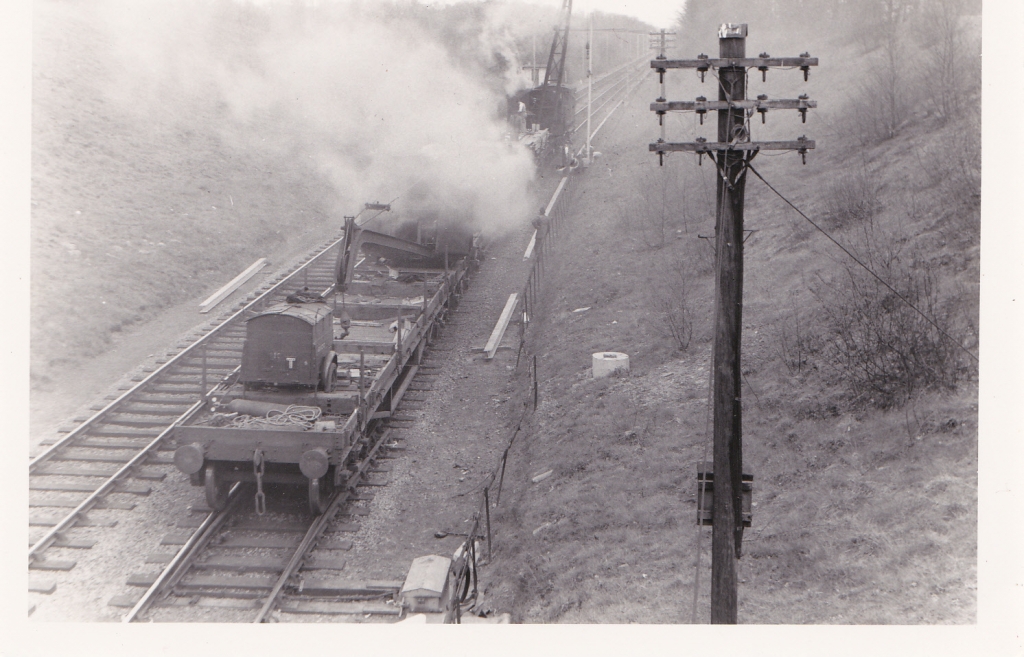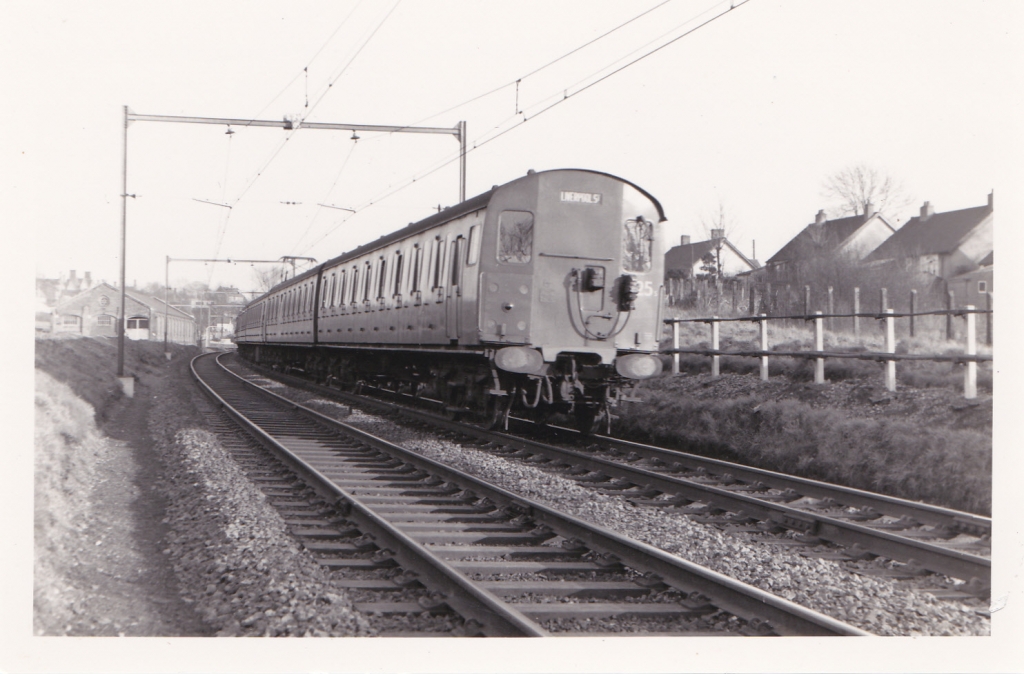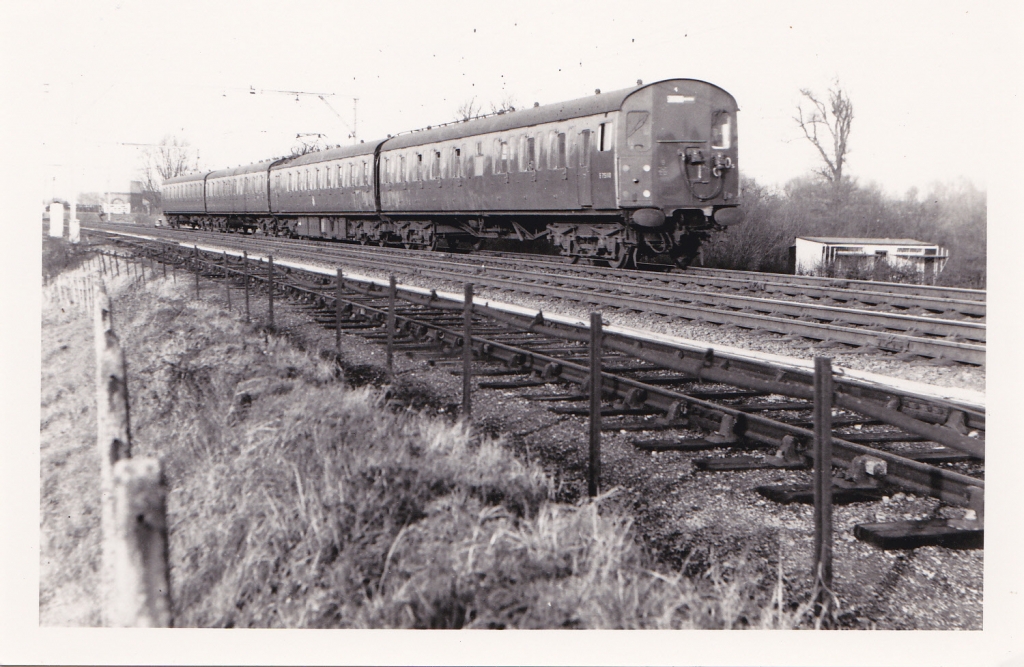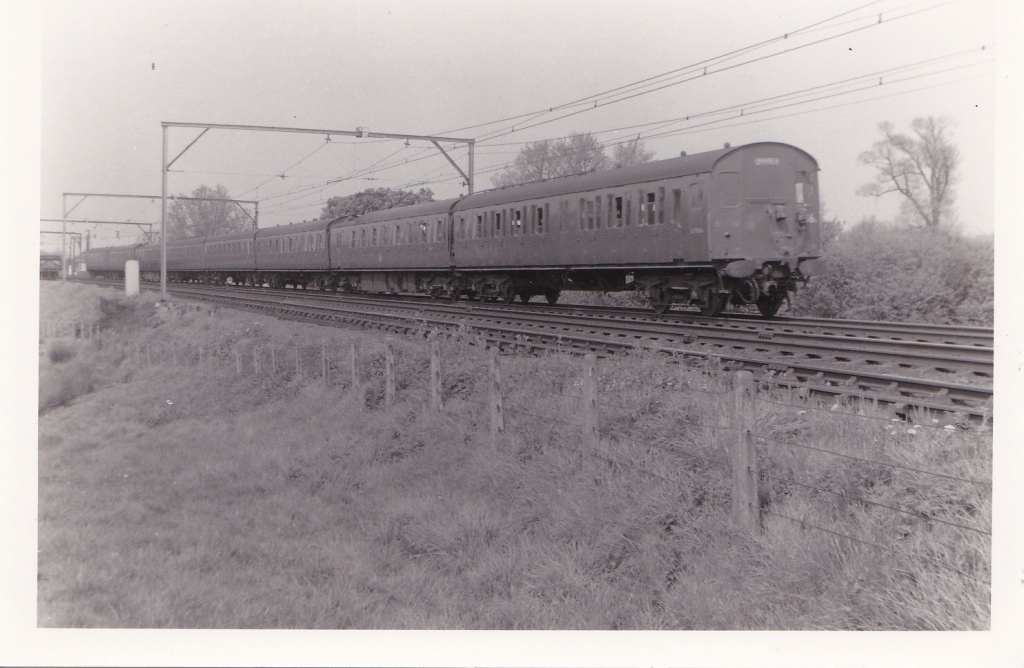The Shenfield to Southend line was opened between Shenfield to Wickford for goods trains on 19th November 1888 and for passenger trains on 1st January 1889. On 1st October 1889 it was opened from Wickford to Southend for goods and passenger trains. The line was electrified at 1500 volts direct current at the end of 1956, with full electric working starting on 31st December that year. The current was changed to 6250 volts alternating current at the begining of November 1960 and increased to 25000 volts alternating current at the end of January 1979. The accompanying photos were taken between about 1953 and 1957.
A Class J20 0-6-0 on a down goods train approaching Billericay in about 1953. Class J20 originated on the Great Eastern Railway in 1920 and were until the introduction of the Q1 0-6-0s on the Southern Railway in 1942 the most powerful 0-6-0s in the country having a tractive effort of 29,045 lbs. Until end of steam working 0-6-0s were the most frequently used goods locomotives on the Shenfield to Southend line.
A B1 4-6-0 approaching Billericay about 1953. The B1 class was first introduced into service in 1942. In steam days one never knew what class of locomotive would be hauling a Liverpool Street-Shenfield-Southend train.
A down train arriving at Billericay behind a B1 in about 1953. The line nearest the right hand side of the photograph ended in some buffer stops and as far as I know was only used by milk trains and cattle trains. The cattle dock is on the right.
An L1 Class 2-6-4 tank locomotive just after leaving Billericay for Southend in 1953. The photograph was taken from the Norsey Road bridge. The cutting at Billericay is the deepest on the line. The L1 Class was first introduced into service in 1945.
Britannia Class 4-6-2 locomotives were very much a rareity on the Southend line. This photograph was taken during the 1955 footplatemen's strike. However they did appear at other times as well and were the largest steam locomotives to operate over the line. They were first introduced into service in 1951.
A Class B12 4-6-0 on an up train near Southend Airport in about 1955. The B12 Class first appeared at the very end of 1911 and were very much associated with the line in 1950s prior to electrification.
The B17 or Sandringham Class dated back to 1928 and one is seen here on an up train passing Southend Airport in 1956 just prior to the start of electric working of the line.
As far as I know not many photographs exist of the electrification of the line. Here the cross bar of a gantry is being put into place at Billericay station.
Here we see the masts of the electric gantries being installed near Billericay.
A steam crane at work errecting a mast for the electric gantries near Billericay.
One of the new electric trains leaving Billericay for Liverpool Street in 1957. They were first introduced into service in 1956. There were 32 of them made up of four carriage sets. Although today's travellers wouldn't appreciate them in comparison to the trains running on the line today they were welcomed as an improvement on the steam trains that they replaced. The trains which in later years came to be known as Class 307 underwent two transformations during their life time. In 1960/1961 they were converted to work on alternating current and the formation of the carriages altered. At the begining of the 1980s they were equiped with corridor between each carriage. The trains survived in service into the early 1990s.
One of the electric trains near Southend Airport in 1957.
A train made of a pair the electric trains near Southend Airport in 1957.
|
